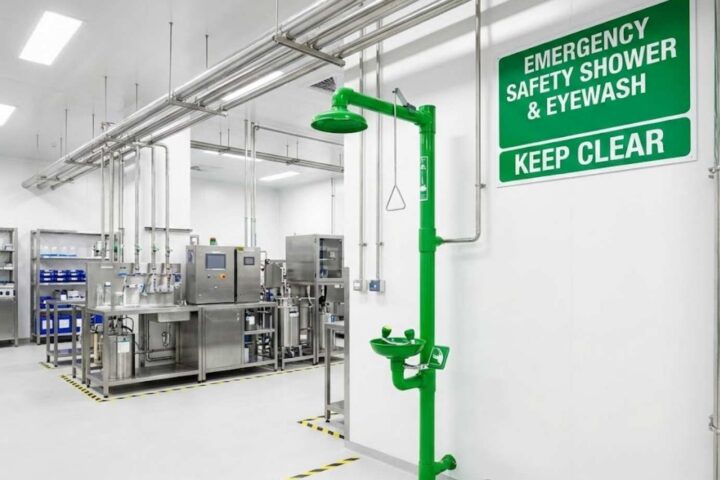Many entrepreneurs and business owners are typically apprehensive of User Experience (UX) Testing.
It appears to be a difficult task, especially if your website has many products and pages.
However, if you want to increase conversions, it’s imperative.
In a study by Magnetic North, 33 percent of respondents said they would quit an online shopping cart because of a bad user experience and more than 90 percent of respondents had a bad user experience.
User experience testing and conversion rates are not far apart from each other.
Before discussing the essence of user experience testing –or usability testing — it’s essential to know what UX Testing is all about.
What Is Usability Testing?
Usability Testing, known as User Experience (UX) Testing, is a technique for testing how user-friendly and straightforward a software product is.
Maze Usability Testing Guide provides more valuable info on what UX testing is. Usability testing involves evaluating a design’s usability with a sample of people representing the target audience.
It can be performed for different designs and typically entails watching users as they attempt to complete tasks.
It is frequently done repeatedly from the beginning of a product’s development until its release.
The primary goals of usability testing are to determine how user-friendly a program is, how flexible it is with controls, and how well it can accomplish its goals.
One of the most crucial facets of a designer’s job is user testing, a component of user-centered design philosophy.
It goes beyond merely having beautiful images (the surface).
It’s about effectively solving a problem, which can only be done through repeated testing and several design revisions.
It’s a great approach to learning important lessons about what works and doesn’t.
Why It’s Important To Do UX Testing
Running a usability test on your product is vital for many reasons.
According to Forbes, Jeff Bezos of Amazon spent 100 times more on usability design than marketing during the portal’s first year. In Bezos’ opinion, this approach made Amazon such a resounding success.
Still not convinced about the advantages of UX testing?
Below are more reasons why UX testing is essential:
Save Time and Money
With an estimated 50% of engineering time spent reworking, addressing a problem after development can be up to 100 times more expensive than it would have been before.
More favorable conversion
You may understand why your users behave the way they do by analyzing users and determining where and why they don’t convert.
Reduce Customer Support Expenses
If the user can accomplish their task without difficulty, your customer care team will reduce the work.
Leaves Little or No Room for Bias
Internal opinions will influence nothing because user testing will provide a new, unbiased view. In other words, it creates an atmosphere for “the truth and nothing but the whole truth.”
Know What Works
Controlled user testing will reveal precisely which elements of your design irritate users, where they become confused, and what prevents them from completing the task at hand.
It’s worthy to note that the effectiveness depends on the
Different Methods of Testing User Experience
Before choosing a specific testing strategy, you should know your target market, the time and money you have to use, and your research goals.
This information will assist you in choosing the appropriate testing strategy and customizing the activities and questions for your test subjects.
Moving on, let’s talk about the types of usability testing you would wish to include in your test plan:
Guerilla Testing:
This is the most straightforward usability test kind. Guerrilla testing entails asking people about your prototype in a public setting, e.g., a cafeteria. Real user input is made possible through inexpensive and straightforward testing.
Moderated User Test
Users who participate in moderated user testing complete predetermined activities on a product or service while being watched in real time by a researcher (the moderator).
A moderated user test allows you to lead participants through tasks, delve further into issues, and get immediate feedback. The ability to examine a user problem in real-time is a benefit of moderated user testing, although biases and facilitation are disadvantages.
Unmoderated User Test
The process involved in this method is different from the moderated user test in the sense that this method of usability testing gives the participants a set of situations, activities, and questions to complete, typically remotely.
Unmoderated user testing is thought to be more productive by many authorities within the space. After all, won’t people feel more at ease expressing their genuine emotions when no one sees them?
Card Sorting
Card sorting is a well-liked technique for usability testing or UX research that may be used to develop or assess a site’s information architecture and enhance navigation.
Heat Maps
Useful for revealing user behavior on pages. Heat maps show visually where a user or users have clicked, scrolled to, hovered their mouse over, or gazed on a page.
They exist in different forms, such as Click Heat maps to find the location where several users have clicked on a particular page. Move Heat maps show where your users are moving or hovering over their mice. Eye-tracking Heat maps demonstrate where visitors are looking the most on a webpage, much like click heat maps do.
Tree Testing:
A tree test, also known as ‘reverse card sorting,’ is a usability testing (UX research) technique used to assess the “findability” of topics on a website or app.
Steps In Conducting A Successful Usability Test
Define Your Testing Objectives
Outline your user testing objectives and UX metrics in detail to start. What do you want to test, and what results are you hoping for?
You must restrict your aims to acquire precise and unambiguous findings from your testing.
The next step is to specify the parameters of your test. It might be vast and pose broad questions, such as which software features are the most user-friendly or which pages are the most accessible. Or it might ask more precise questions like what prevents consumers from making a purchase or what prevents conversions.
Prepare your product or prototype for testing:
In the early stages of development, usability testing is frequently conducted.
Usability testing is carried out early to find problems or adjustments that would be expensive later on.
You still require the item, so the test can be performed. For this reason, the majority of businesses create a prototype. It might be a demo app or a website with limited features.
Pick a User Testing Method
After you’re done identifying the objective of your testing and making your product/prototype ready for testing, you should pick a testing method that best suits your goals and the product to be tested.
Find Relevant Participants
Make sure you set clear selection criteria before recruiting users to participate in user testing. To test subjects who fit your ideal user profile, do as such.
Typically, 3-5 users are more than adequate to pinpoint the main problems. Segment test participants based on traits that correspond to your ideal user persona (e.g., age, gender, location, profession, education, etc.)
Conduct Usability Test
Usually, the most enjoyable aspect of a study is the actual testing. Make sure you do the usability test in a distraction-free environment. Any practical obstacles, such as a bad connection or a recording difficulty, should be addressed in advance. These problems should be resolved with a dry run.
Ensure you don’t sway the users’ judgment during the UX testing procedure. Do not ask them questions that have a predetermined response.
Document and Analyse Results
Work with your designers and/or product managers to examine the results based on your test results. During the test, have an open mind because some results can be utterly at odds with your presumptions. Don’t become overly wedded to the design; that is not the goal of user testing.
Based on the test’s findings and feedback, improve. Highlight the problems that surfaced during the test as a springboard for later iterations.
What Makes A UX Tester Reliable
UX Testing majorly has to do with research because you are testing what works best for your product in real-time.
Hence, your job is reliable because the study findings must be reliable or repeated. It must be possible for other researchers to carry out the same study under the same circumstances and produce the same results.
You can evaluate reliability using inferential statistical methods, determining the likelihood that a given result would occur consistently across a larger population. You do this by taking into account the statistics, the sample size, and the variability of the data.
Most clients—and usability experts—commit the error of confusing descriptive statistics with inferential statistics. Calculations like averages or ranges for the sample group are descriptive statistics.
Wrapping Up
User testing is a usability strategy that lets you learn helpful information from your users about their motivations for using your products. You will better understand your users and what they hope to accomplish with your product just by preparing for the tests.
Choosing the proper usability testing technique for your product might be challenging because there are so many options available. But don’t worry; this issue affects all UX specialists. It’s crucial to select the approach you believe will work best for your project and to be willing to change course if necessary.
Author Bio

Martins Favour is a creative content writer with over five years of experience writing SEO content for various brands. She finds a home in weaving worlds out of words. Stories are her life and LinkedIn is her favourite tool.








